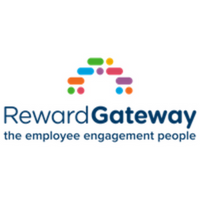Ways to create reward communications that motivate employees

What if you could do the same thing for your reward communications?
Truly motivating, engaging content doesn’t have to be limited to fairy tales or fantasy books. You can be your own ‘author’ of motivational communications to engage your employees. Here’s how:
1. Show your personality
What draws you in and connects you with a book are the characters and their personalities. Now you probably don’t have actual characters in your reward communications, no heroes or villains, but that doesn’t mean you can’t show personality in your communications.
Think of a communication personality as your reward programme’s distinct characteristics, what makes it special, unique and engaging to your workforce. A few ways you can do this is through the programme name itself, creating fun imagery and themes to draw your employees to your communications. We did this recently with our new recognition programme, naming it MORE, standing for Moments of Recognition Everyday, and used fun emojis for each of the individual recognition plans. This showed their personality, made it stand out, and motivated employees to want to read more about who and what they were.
2. Tell a story
What keeps you reading a book is, no surprise, the story itself. By using storytelling as part of your reward communication strategy you can bring dull facts to life and create stronger engagement between the communication and your employees. Stories can help change employees’ opinions, shape their feelings and ultimately guide their actions.
In fact there was a study done by a Princeton neuroscientist which measured a woman’s brain activity when she told a personal story. The story was then played to five people, measuring their brain activity as well. The study found a strong similarity between brain activities, leading to deeper understanding and empathy between the storyteller and the audience.
We did this when we rolled out our new wellbeing benefit. By using the technique to draw our employees to the communications, they were able to better understand how the new benefit would work and were motivated to ultimately sign-up to use the benefit. Each day our employees would read stories from our wellbeing champions, each sharing how they were going to use the new offering.
3. Add some magic
Last but not least, any good book has its own kind of magic, something that makes it stand out from the others. If you want your reward communication to truly stand out from all of the other communication ‘noise’, I highly recommend sprinkling a little magic dust.
We did this with the wellbeing benefit I mentioned in the previous tip, with the magic being virtual teaser doors appearing on our communications portal. Each day another door would magically ‘open’, allowing employees to enter and read the stories being told by our wellbeing warriors. Had we sent out emails or only posted the stories on a lifeless intranet, I doubt our employees would have been motivated to read the communication, which they did with our magical doors.
I hope that these three tips and this new way of approaching reward communications helps you get the happy ending that your business requires and your employees deserve. And that brings us to: The End.
Author is Debra Corey, Group Reward Director at Reward Gateway.
This article was provided by Reward Gateway.
Supplied by REBA Associate Member, Reward Gateway
We help the world's leading companies with an employee engagement platform.







